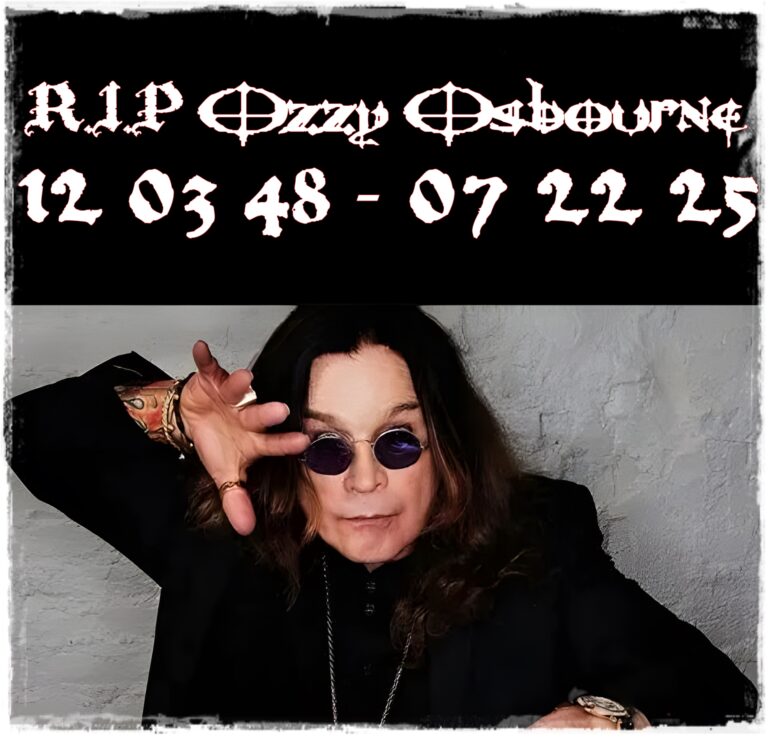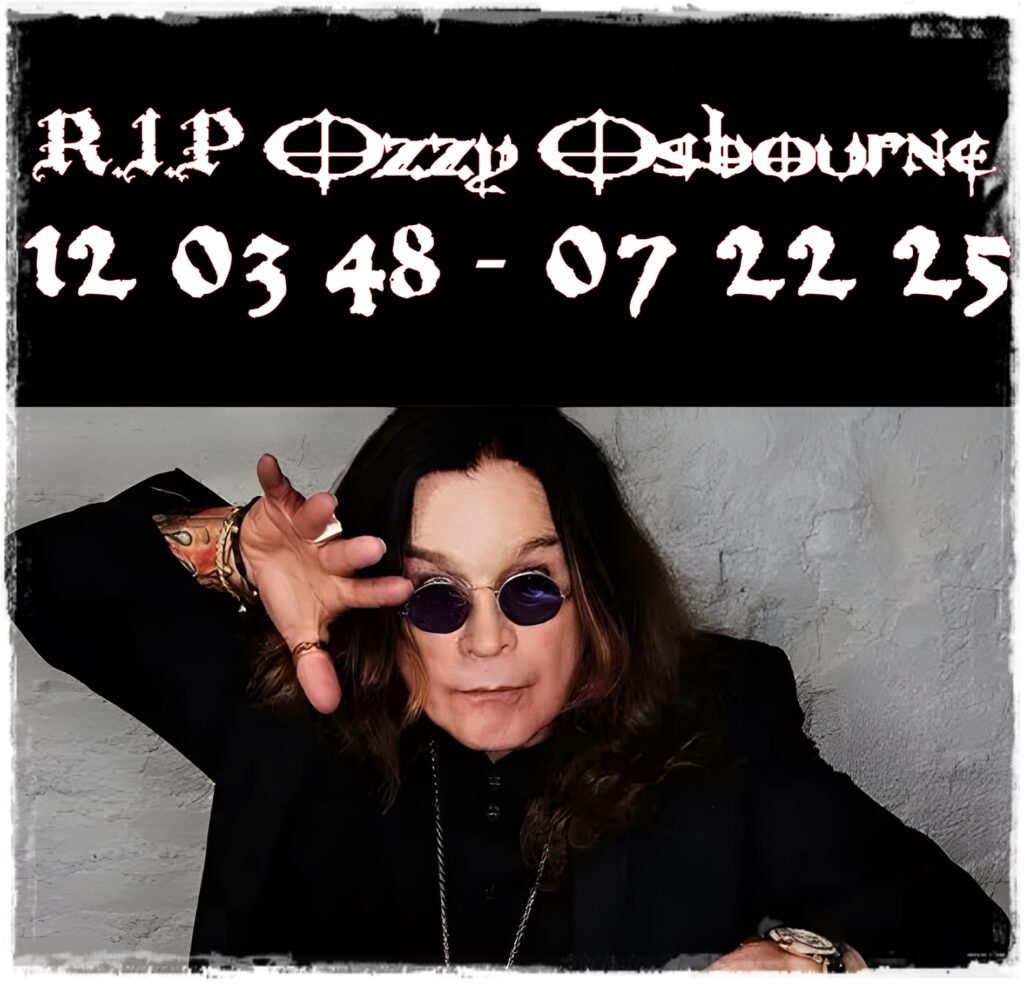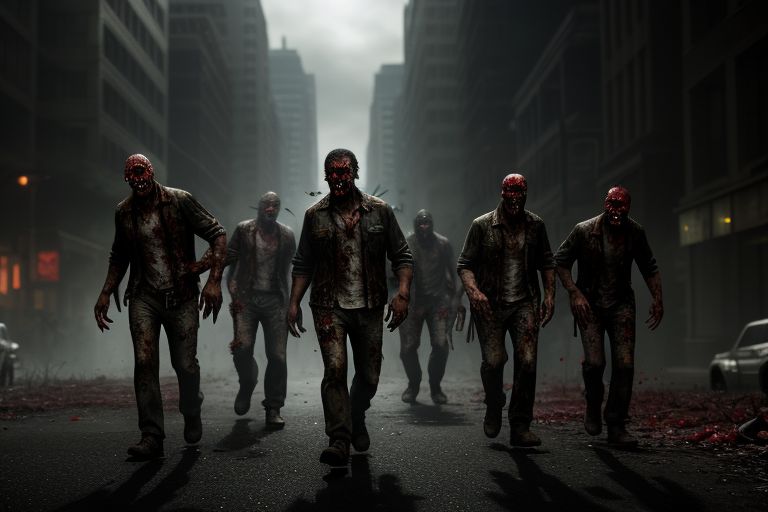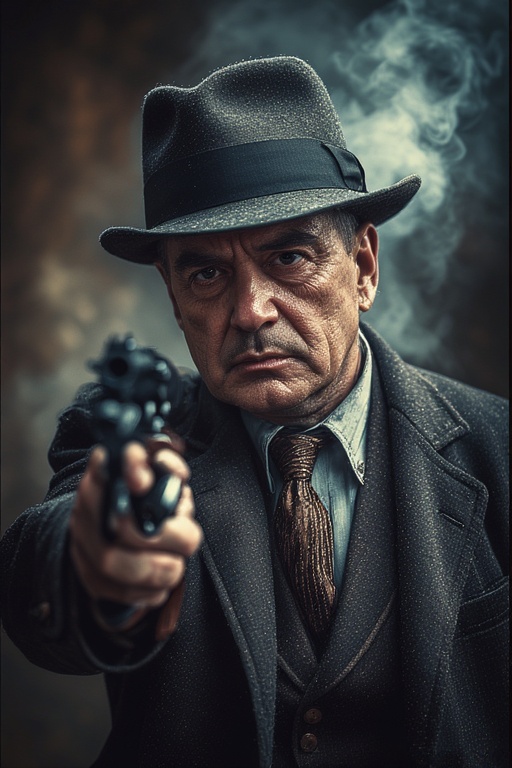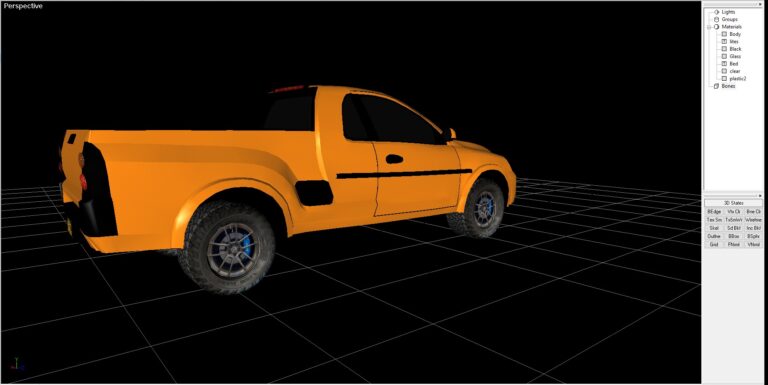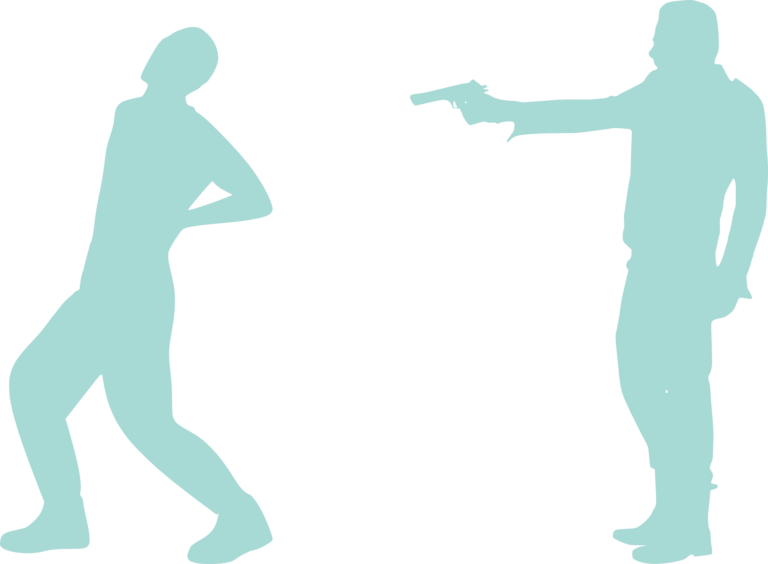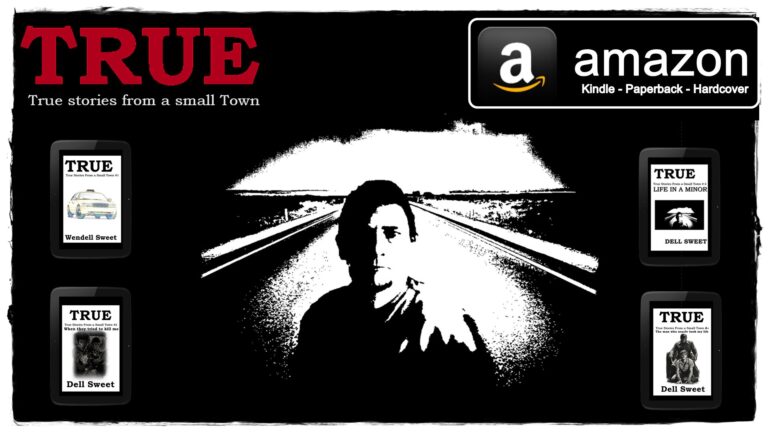opinion
In the ancient past, a cro magnon girl child was born and promised in marriage to a distant related tribe. She has come of age, sixteen and will now be escorted across several hundred miles of wilderness to her soon to be mate in the distant tribe.. Hunters and a medicine woman will accompany her. Once there she will begin her new life and face whatever lies ahead for them… #Prehistoric #CavePeoples #CroMagnon #Readers #HistoricalFiction
Home: https://www.wendellsweet.com

France: The “Oldest and Most Complicated” Ally
France is often referred to as America’s “oldest ally,” a relationship dating back to its crucial support for the American Revolution in 1778.1 Yet, despite this deep historical bond and shared values of democracy and liberty, there’s a recurring perception—particularly in the United States—that France is not always a good or reliable ally.2 This feeling stems not from a failure to cooperate, but from France’s fierce commitment to strategic independence and its history of prioritizing its own national and European interests over American foreign policy consensus.3
This dynamic of cooperation mixed with occasional confrontation has defined the Franco-American relationship for centuries.
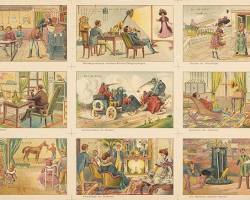
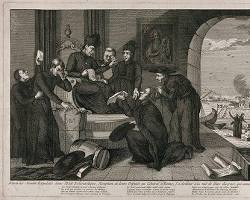
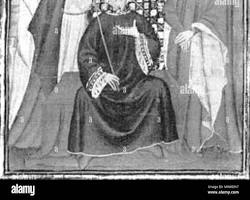
The Root of the Tension: Strategic Autonomy
The fundamental reason France is often perceived as a “difficult” partner is its pursuit of “strategic autonomy.” This doctrine is rooted in the country’s post-World War II desire to reclaim its great power status and ensure its security is never wholly dependent on another nation, even a friendly one.5
This drive for independence has been most clearly defined by two major actions:
- De Gaulle’s NATO Withdrawal (1966):6 Under President Charles de Gaulle, France famously withdrew from NATO’s integrated military command structure (though it remained a political member of the alliance).7 De Gaulle evicted all foreign troops and NATO bases from French soil, insisting that France develop its own nuclear deterrent (force de frappe). This was a clear message that France would determine its own defense policy and would not automatically submit to American military leadership.8
- A Truly European Defense: France remains the EU country that most aggressively champions a truly independent European industrial and defense policy.9 While cooperating closely with the U.S. and NATO on specific missions (like counterterrorism), French leaders, particularly Emmanuel Macron, have consistently argued that Europe must avoid becoming a “vassal” of the United States, especially given shifts in American politics and foreign policy.10
High-Profile Disagreements and Diplomatic Splits
While cooperation on trade, intelligence, and culture is robust, the perception of France as a “difficult” ally is reinforced by several key diplomatic splits:
1. The Iraq War Opposition (2003)11
The most significant modern rift occurred when France, led by President Jacques Chirac, vehemently opposed the U.S.-led invasion of Iraq.12 France threatened to use its veto in the UN Security Council against a resolution authorizing military force, effectively blocking international legal consensus for the war.13
- Consequences: This opposition led to a wave of “Francophobia” in the United States, epitomized by calls to boycott French goods (like wine) and the absurd, temporary renaming of “French fries” to “Freedom fries” in some US government cafeterias.14 The diplomatic fallout strained the alliance for years.
2. The AUKUS Submarine Debacle (2021)
A recent and painful blow to the French alliance was the AUKUS security pact between the United States, the United Kingdom, and Australia.15 The deal saw Australia abruptly cancel a multi-billion dollar conventional submarine contract with France in favor of acquiring U.S. nuclear-powered submarines.16
- The Snub: France was not consulted and viewed the move as an extraordinary act of betrayal and a diplomatic “stab in the back” by its allies. President Macron temporarily recalled the French ambassador from Washington—a rare and severe diplomatic rebuke—underscoring the feeling that the U.S. prioritizes its own geopolitical interests, even at the expense of its “oldest friend.”17
Historical Context of Complications
The current tensions are not new; they follow a pattern of cooperation and conflict that extends across centuries:
| Historical Point of Friction | Description |
| Quasi-War (1798–1800) | Shortly after their initial alliance, tensions over U.S. neutrality in the French Revolutionary Wars led to French seizures of American ships, resulting in an undeclared naval war. |
| The Suez Crisis (1956) | The U.S. and the Soviet Union jointly opposed the invasion of Egypt by the U.K., France, and Israel. France viewed the U.S. action as a humiliation and a clear example of America undermining its core allies to serve its own global agenda. |
| Vietnam War | De Gaulle’s France openly and vocally criticized American involvement, urging the U.S. to withdraw. |
In short, the feeling that France is a “difficult” ally is an unavoidable consequence of its determination to be a great power in its own right—one that reserves the right to disagree with Washington on matters of global order, trade, and military strategy. For France, being a loyal ally doesn’t mean being an obedient one.

Home: https://www.wendellsweet.com
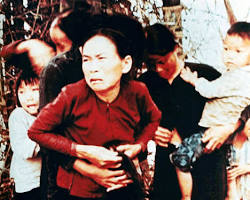

The Conflict: North Versus South
The Vietnam War (known in Vietnam as the Resistance War Against America or simply the American War) was primarily a conflict between the communist Democratic Republic of Vietnam (North Vietnam), led by Ho Chi Minh and his successors, and the anti-communist Republic of Vietnam (South Vietnam), backed initially by France and later by the United States.
- North Vietnam sought to reunify the country under a single communist government. Their forces included the regular People’s Army of Vietnam (PAVN) and the Viet Cong (VC)—a South Vietnamese communist guerrilla force supported by the North.
- South Vietnam sought to maintain its independence as a non-communist state. Their primary military force was the Army of the Republic of Vietnam (ARVN), heavily supported by U.S. troops and materiel.
The conflict was a major proxy war of the Cold War, with the North supported by the Soviet Union and China, and the South supported by the United States and other anti-communist allies.


French Involvement First (The First Indochina War)
French involvement was rooted in nearly a century of colonial rule over Indochina (Vietnam, Laos, and Cambodia).
- Colonial Resistance: Following World War II and the Japanese occupation, the French attempted to re-establish their colonial control, but they were met with fierce resistance from the Viet Minh, a nationalist and communist-led independence movement under Ho Chi Minh.
- The Defeat: The war between the French and the Viet Minh lasted from 1946 to 1954. The decisive turning point came with the Battle of Dien Bien Phu in May 1954, where the French forces were decisively defeated.
- The Geneva Accords (1954): This agreement formally ended French rule and temporarily partitioned Vietnam at the 17th Parallel. The North would be governed by the Viet Minh, and the South by a non-communist regime. Crucially, the accords called for nationwide unification elections in 1956, which were ultimately rejected by the South Vietnamese government (with U.S. backing) because they feared Ho Chi Minh would win. The division became permanent, setting the stage for the Second Indochina War (the Vietnam War).
American Involvement Afterwards (The Vietnam War)
U.S. involvement grew out of the Cold War policy of containment—preventing the spread of communism.
- Advisory Role (1950s–Early 1960s): The U.S. initially provided financial and military aid to the French and then to the new South Vietnamese government, installing a series of political leaders, most notably Ngo Dinh Diem. The U.S. presence consisted mainly of military advisors and trainers.
- Escalation (Mid-1960s): Following the Gulf of Tonkin Incident in 1964 and the subsequent resolution by Congress, President Lyndon B. Johnson dramatically escalated the U.S. commitment. This marked the shift from an advisory role to large-scale military intervention, including bombing campaigns against North Vietnam and the deployment of hundreds of thousands of combat troops to the South. At its peak, the U.S. had over 500,000 troops in Vietnam.
- De-escalation and Withdrawal (Late 1960s–Early 1970s): The 1968 Tet Offensive, though a military defeat for the North, was a psychological and political victory that eroded American public support for the war. President Richard Nixon introduced the policy of Vietnamization, gradually withdrawing U.S. troops while simultaneously training and equipping the ARVN to take over the fighting.
- End of War: The Paris Peace Accords were signed in January 1973, leading to the final withdrawal of U.S. combat forces. Fighting continued between North and South Vietnam until April 30, 1975, when North Vietnamese forces captured Saigon, leading to the total collapse of South Vietnam and the reunification of the country under a single communist government.


How many American men (and women) died in that undeclared war?
The total number of U.S. military fatal casualties is 58,220. This figure includes men and women from all branches of the armed services who were killed in action, died from wounds, or were missing in action and declared dead. This number is inscribed on the Vietnam Veterans Memorial Wall in Washington, D.C.
How were returning men and women, U.S. Soldiers, treated by the American press and public?
The treatment of returning Vietnam veterans was markedly different from the heroes’ welcomes of previous wars like World War II. It is widely considered one of the most painful legacies of the conflict.
- The Press: Television news brought uncensored, graphic images of the war’s brutality and futility directly into American homes. As the press became increasingly critical after major events like the Tet Offensive, the negative narrative about the war often spilled over onto the soldiers themselves. Negative stories focused on drug use, low morale, and atrocities.
- The Public: Veterans often returned home to an indifferent or, in some cases, hostile public. The widespread unpopularity of the war meant that anger at the policy and the conflict was often conflated with anger at the soldiers who executed it.
- Unlike World War II veterans who received triumphant ticker-tape parades, Vietnam veterans often arrived back individually at quiet airports and were urged to change into civilian clothes quickly.
- While the image of veterans being “spit on” has become a powerful and politically useful myth, evidence suggests such incidents were rare. However, what was widespread was a distinct lack of recognition, gratitude, or organized celebration.
- Many veterans also struggled with the long-term psychological and physical effects of the war, including Post-Traumatic Stress Disorder (PTSD), which was not widely understood or formally recognized by the medical and veterans communities until years later.
Has it been rebuilt yet? How is Vietnam now…


Rebuilding and Economic Status:
- Economic Reform (Đổi Mới): The initial years after reunification (1975–1986) were characterized by economic struggles due to the imposition of a centrally planned, socialist economy, internal political repression, and a U.S. trade embargo. In 1986, the Communist Party of Vietnam introduced sweeping economic reforms known as Đổi Mới (Renovation).
- Current Status: Vietnam has undergone a remarkable transformation. It has shifted from one of the world’s poorest countries to a lower-middle-income country with a dynamic, market-oriented economy. It is now a major global manufacturing hub and is largely considered rebuilt, economically speaking, having integrated fully into the global economy.
Is it a free country now?
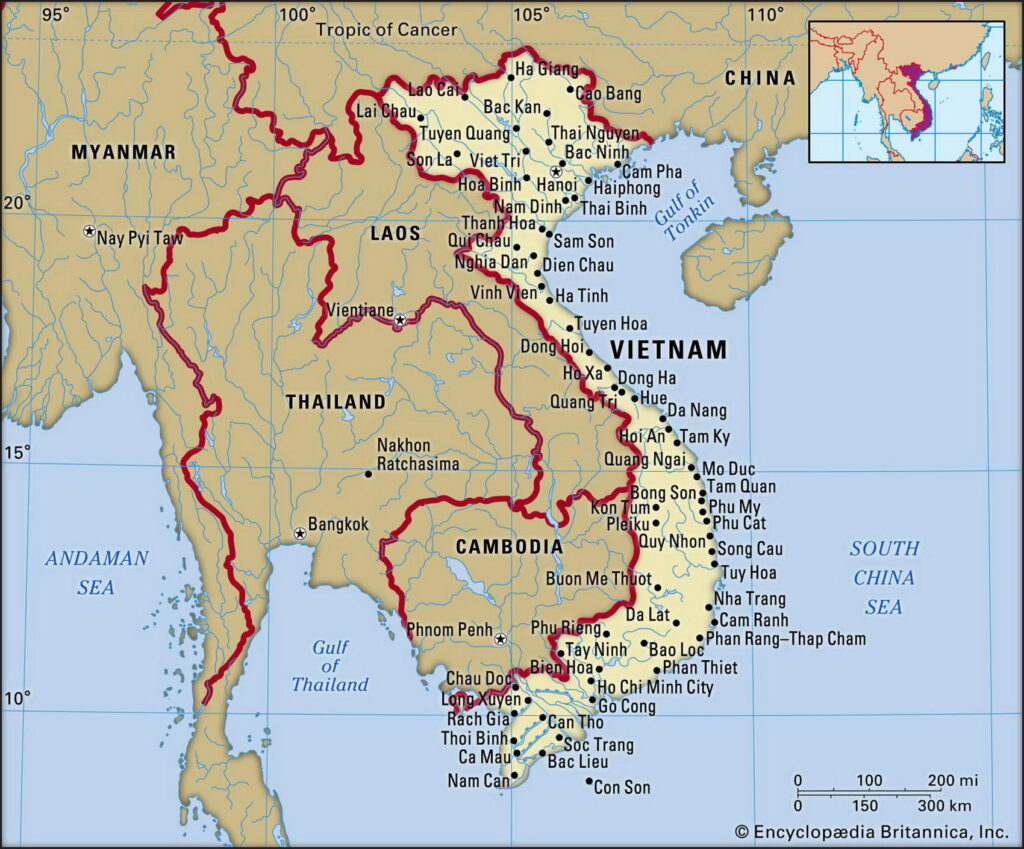
Political Status:
- Vietnam is not considered a free country by international standards; it is a one-party state ruled by the Communist Party of Vietnam (CPV).
- While the constitution guarantees fundamental rights, in practice, the CPV maintains tight control over political life, the media, and religious organizations.
- The government has cracked down on dissent and limits freedoms of expression and assembly. While economic and social life is much more open than in the post-war decades, the political system remains authoritarian.


In summary, Vietnam is a nation that is economically thriving and fully rebuilt, but it operates under a centralized, single-party political system that restricts democratic freedoms. Relations with the United States are robust and have transitioned from adversaries to increasingly strategic partners.

Posted by Dell
Happy Sunday. It has been a long weekend for me. I suppose that like everyone else I try to cram too many things into the weekend. I always end up with undone items on my weekend list.
Yesterday I ran into an arguer. Some people will listen to what you say, or expect you to listen, and then you can agree to disagree or maybe even enlighten each other and learn something that changes your mind. Arguers on the other hand are never wrong so there is no need at all to back up on what they have said, or apologize, or change their mind or anything other than point out that you are absolutely wrong and then proceed to argue you into submission. Couple that with religious extremism and you have got a formidable opponent. Now not only are they right but the Holy Ghost, Jesus and God himself say so. I know that because I have had them tell me, like the arguer the other day, that the Holy Ghost gives them the words to say. Talks to them. My friend said, Hmm, usually when you have voices in your head it means that you have an illness, usually a mental illness. I agreed.
I would love to go further with this line of thought, but I wont. I will say be who you really are and don’t let people push you around. And don’t waste your time with arguers. You just have to accept the fact that they are not interested in solving the problem, or compromise, they are only concerned with winning. It’s a ME ME ME thing, and so it really has nothing at all to do with you.
I have about a week or two before I am back into full time writing. I have already got the notebooks out and the storyline working. Now that Earth’s Survivors and The Zombie Plagues are splitting there is a lot to write. I have it worked out in my head and that is my start. The rest comes when I sit down and begin to write it in a few weeks. I am really looking forward to it.
I am going to leave you with a free story from the Rapid City stories. This is Two. These are short stories but I have a longer book stuck in my head that I will write someday, and as the Earth’s Survivors and The Zombie Plagues books progress, Rapid City will play a larger and larger part. So one way or the other the story will be written…
Rapid City: The Beginning
By Wendell Sweet
PUBLISHED BY:
Wendell Sweet With Amazon Digital
Rapid City Cowboys and Zombies Two: The Beginning
Copyright © 2013 by Wendell Sweet All Rights Reserved
This ebook is licensed for your personal enjoyment only. This ebook may not be re-sold or given away to other people. If you would like to share this book with another person, please purchase an additional copy for each recipient. If you’re reading this book and did not purchase it, or it was not purchased for your use only, then please return to Amazon.com and purchase your own copy. Thank you for respecting the hard work of this author.
This short story And The Earth’s Survivors Free Preview is Copyright © 2013 Wendell Sweet. No part of this book may be reproduced by any means, electronic, print, scanner or any other means and, or distributed without the authors permission. Permission is granted to use short sections of text in reviews or critiques in standard or electronic print..
This is a work of fiction. Any names, characters, places or incidents depicted are products of the authors imagination. Any resemblance to actual living persons places, situations or events is purely coincidental.
DEDICATION
To the Tuesday night Guys.
Rapid City: The Beginning is Copyright © 2013 Wendell Sweet
All rights reserved
Foreword
A short foreword. I did not realize when I wrote the original story that there would be interest in it as any more than a good, short read. But, like many of the readers out there, I got caught up in the life of Robert Evans… What was it like? Traveling from town to town? Selling your skill to the highest bidder. I found myself so curious that I sat down to write it out and find out. At the very least this will be a long series of short stories, but it may just turn into a novel with the short stories as a prelude to The true story of Robert Evans life….
Wendell Sweet 01 – 2013

The novel based on this short story is available at Amazon.
Rapid City
The newfound resources provided a small measure of comfort, but the shadow of suspicion and mistrust lingered, a constant threat to their already precarious existence. They had survived the attack, but the war within Rapid City had only just begun, a war fought not with guns and blades, but with suspicion, betrayal, and the relentless erosion of trust. #Dystopian #Apocalyptic #Zombie #KU #Audio #Readers #Listeners #DellSweet
*******
Rapid City: The Beginning
*******
They had come from north of the border. Two men and two women, and they picked up others as they came. They were twenty when they came to the river where it had cut into the floor of the desert and spread out nearly a mile wide.
Near the spot they had decided to build there was a set of rapids that stretched for nearly a mile. So they had named the city Rapid City, half joking, but it had stuck as they had worked to build the city. And city was a kind name. Rapid city, six months later, had been no more than a collection of ten wood sided structures, and the river had moved more than a mile away. Wetlands had formed where the river had been, and they seemed to be slowly turning to swampland.
Ten had died over the last few weeks. The fight, and that was what it was, was taking a toll on them.
On this day, the sun hung straight up in the sky. Dust coated the buildings, the odor from the swamp seemed to hang over the little town like a veil. Gary sat on the front porch of the church and looked out at the little town. His wooden chair leaned back into the wall, feet on the railing. And in the daylight it seemed unreasonable that there could be any such thing as the Un-Dead. It seemed, in fact, completely impossible.
The first few deaths they had not been prepared for. The first had been Gary’s friend Daniel. They had buried him in a small cemetery they had built a mile from the town to bury a few wanderers who had found the town in a half dead state and not lasted long after they did manage to find it. Daniel was the first of their own they had found a need to bury.
They had buried him in the early morning after finding him dead in his bed. It had been a horrific scene. They had thought quite possibly it had been wolves. The windows were open to let in the summer breezes. The wolves, they had seen them out by the swamp, could have easily come through the window. Daniel had been savaged. His throat ripped open. They had buried him in early morning and by that evening twenty six wolves had been dragged back into town. If there were any left they had hidden themselves well.
Then evening had come and the whole world had changed. It was not far into the night when the noises had begun out at the cemetery.
In the desert noises carry a long way. They had been unsure of what the noises meant at first. What they had decided was that there should have been no noise at all out there in the darkness. Six of them had taken their rifles and gone out into the darkness, following the noise to it’s source.
When they had arrived at the cemetery the grave had been opened. But, not just opened. Dug up, and dug up from the inside outward. There was no way they could deny it, although they did until a few nights later when Daniel himself had come back.
It had been deep into the night. Deep. Gary, Mitch and Sam and Freddy had had the watches. The watches, at first, had been to watch for the never ending gangs of murderers and thieves that seemed to be flooding out of the north. The watches by that night, had consisted of nothing more than hanging around in the church building, which was their newest and best built building, and maintaining a presence in the town just in case someone happened into the town in the middle of the night. No one ever had in the last few months.
There was no denial after that night. Daniel had come from the shadows, stinking of the grave, and made a grab for one of the rotting corpses of the wolves that they had meant to drag back out to the swamp earlier in the day but hadn’t gotten to. Gary had seen him clearly. He had turned to the others but it was one of those things where everyone had just happened to be looking in the right direction at the right time. No one had missed it. No one had only partially caught it. When he had turned to them they had been turning to one another. The only that didn’t happen was nobody thought to go for a weapon until a few minuets later. And, even then, they were not sure exactly what they were doing.
They had not caught him that night, but they had caught him the next night when he had killed and was eating Barry Evers in the storage shed behind John Sampsons place. That had been a bad deal, Gary thought now.
Gary had shot him twice. Nothing. He had not even stopped trying to eat Barry’s face. Mitch had stepped up and blew his head off.
Rapid City had no doctor. W had had a veterinarian at the first but he had run off with Freddy’s wife and that was the last we’d seen of him. Together, Gary and the others had looked over the body. And, body it was, and had been for several days. Daniel had died and had somehow not died at the same time. That was the first time Gary and the others had talked about Zombies. Some of the travelers through Rapid city had talked about them, it was the hottest topic, usually. It was supposed that the north was infected with them. But They had never seen one, and they had never discussed them until that night.
As it turned out the Zombies were infesting the swamp. They had buried Daniel for the second time only to find Freddy dead the next morning. His throat ripped open the same way Daniels had been And Mitch had argued for taking his head off. It was the right, the smart thing to do. To make sure he didn’t come back. But they had not. They had not wanted to sink to that level of barbaric depravity. Sam had argued against it and it had not been a hard thing to get behind. But that night when the noise had started they had grabbed their weapons and made for the cemetery
They had found him nearly free of the grave. And there had been more. Six other Un-Dead had been standing close to the grave. Waiting for him.
Before the killing was over they had gotten two of those waiting and Freddy. They had dumped all three into the grave. Mitch had taken a round pointed shovel and severed their heads. It had taken forever and had been about the most gruesome thing Gary had ever seen. But he had been unable to take his eyes off the scene.
Gary tipped his chair forward and stood from the chair as the legs came down on the wooden decking. A rider was approaching on the main street. Gary loosened his pistol from his holster. It was one of those nylon webbed ones. They were all wearing one kind or another now. This was surely not a Zombie but they were down to ten. They were vulnerable on many fronts now. Not just from the undead, but from the living too who seemed to have no problem killing each other for next to no reason at all. A dog. A vehicle. A horse, and horses were becoming major items, but mostly women. Women were the keys. Men could not procreate, women could. True, they could do it with any man. But a man could not do it without a woman at all. Gary had seen many men killed over a woman.
“Right there will do,” Gary told the man in a clear strong voice.
The man stopped the horse in the street but stayed on his mount looking across the short stretch to Gary where he stood on the porch. They were down to ten now. Two men and eight women. It was like the Zombies only wanted the men. Or maybe wanted the men out of the picture.
“Heard this was a peaceable town,” The man said.
“Was… Ain’t now… Now it’s a plague town… You best ride on,” Gary told him.
“I ain’t heard of no plague,” The man said. His eyes were like diamonds looking out from under the brim of his hat. He wore no gun, but a wire stock machine pistol protruded from a scabbard off the saddle.
“You heard of this plague… They call it the plague of the dead… The Un-Dead… Zombies. Call it what you will, you heard of it or you ain’t real… And I can tel you they are real and we got them right here… You don;t even want to think about spending no time here at all.. We been losing a man a night lately…” Gary shifted, rocked on his heels to take the tingling out of his legs. He had sat in the chair too long. His left leg was nothing but pins and needles. He kept his eyes on the man who shifted in his saddle slightly.
“Ain’t real,” He said.
“Uh huh… Got a little cemetery outside a town… Rode right by it.”
“Uh huh… Saw it,” The man agreed.
“Up until a few weeks ago that cemetery was empty. Go tell those dead men Zombies ain’t real.” He stepped forward and spit over the rail into the dust.
Silence held. The dust seemed to settle more fully onto the town. At last the man spoke.
“Any way I’d like a drink… Wouldn’t deny a man a drink, would you,” he asked?
“No I would not. And I will tell you what you do. Point that horse due East out of town. You’ll hit the river and fresh water about a mile out… Ain’t been no fresh water here in months. Drink your fill.”
His eyes seemed to blaze from the brim of his hat. “I believe I’ll remember you, Friend.”
“Good. You do that. Then remember I saved your stupid ass by sending you on your way… Ain’t no way to fight these bastards…” He spit over the rail once more. “We expect to be dead inside of a week… Got about seven hours until full dark. That will put you up in the hills… Ain’t heard of trouble from the Un-Dead up there.”
The stand off lasted a few more minuets in the hot sun and then the man turned his horse and rode away without another word.
Donita waited in the shadows of a building starring at the lights in the church building. They were forty now. Strong. And she was their undisputed leader.
She had undergone many changes on the journey across the wastelands of the west. Her body had finished it’s changes. Her mind had come back to her. And her authority had come more fully to her.
They were forty bot they could have been seventy. She would not stand those who showed the least bit of defiance. With her there was no second chance. There could not be. If defiance was in them it would only grow. If they grew they would become strong. If they became strong she would not be able to control them. If she could not control them they could control her, and she could not abide that. She ruled and bowed down to no one at all.
She took them as babies. When they were lost in the pain and confusion of transition. She killed them. Took their heads and let them continue their journey to the dead. It served a reminder to those with her, but she was not sure it mattered after a time. She had so many that were loyal to her that none could get close to her. And chief among them was the big man she had taken up north, Jeff.
The passage into death took some of what you were. You did not come through it the same. The skin pulled taught upon your bones. The fat stores were gone, and you were reduced to the basics. Not so with the big man. He had come through virtually unchanged. That and the strength that naturally came to them made him the strongest in the group. He was easily stronger than and three of her others; any five breathers. He stood beside her now. Waiting on her orders.
The moon was new in the sky. Still competing with the setting sun. They had set out from the swamp just past twilight. She hoped the breathers were thinking that there was no need to worry until later in the evening when full dark came.
She watched a few seconds longer. They were at their evening meal. They took them together now. Hoping for security in the numbers. Shadows moved on the curtains as she watched. They would be the most vulnerable now, and it was time to end this fight with them. The night before they had killed one of the twins. One of her twins, and they had to pay for that.
She hesitated the briefest of seconds longer, then, as a group, they took the building and the feasting lasted into the early morning hours.
I watched the sunrise on the wall across from me. I could’ve turned but my heart wasn’t in it.
The walls were plywood, scarred, gouged and in need of a coat of paint. But there would be no paint, of that I was sure. Even if it could be found no one would be bothered to take the time to put it on.
The pain was running around in me like a live thing. A ferret gnawing its way out of a burlap sack. It was the biggest thing in my life right now, overshadowing the why and how of me seeing this sunrise and hopefully a few more.
The sun crept a little further up the wall and the shadows in the room began to fall back under the furniture and creep into the corners, This day was coming whether I wanted it or not. Whether I was in any shape to see it or not.
I shifted slightly and the pain became a monster. The wall flickered in my vision and then I was gone, dropping off into a deep, black void…
~
My eyes came open like rusty springs on a screen door, screaming and reluctant. The shadows were coming back down the wall. Maybe I had avoided the day after all. I caught a movement to my right and turned my eyes faster than I should have. Doc Mulberry sat in the gathering shadows, chair tipped back, feet off the floor. He grinned at me when my eyes fell upon him.
“Well, now. If it ain’t Robert Evans, lately of the prettty-close-to-being-dead.” He drawled.
I tried to move my arm and the pain shot back up and into my shoulder like a live wire in the old days of electricity. It lit up the pain in my chest which I had barely even noticed at that point. I swiveled my eyes down to look.
“It’s there,” Doc told me. He quietly lowered the chair to the floor and caught it with his feet.
My eyes found it. I had expected to see a wrapped stump somewhere below my shoulder, at least below the elbow. In fact, I had expected not to wake at all. What I saw was my whole arm. Wrist wrapped. Fingers pale and blue tinged. I recoiled and thrust my arm away despite the pain that caused the gray to seep into the corners of my vision. “What in fu… !”
Doc leaned from the chair and spoke forcefully. “You got the blood in you now…. I left it….” He sat back and waited for me to lie back into the bed.
I cursed, still holding the arm away from my body. But I was tired and the pain was back, and I let it down, resting it once more at my side. I took a deep breath and closed my eyes.
“I thought it over,” Doc said in a soft, low voice. “If I’d taken the arm you’d a been done for. You ain’t no one armed gunfighter… I watched you close.. If you’d a started to turn I’d have done you right then. Believe it…” He paused for a bit. Kicked the chair back off the floor and balanced against the wall once more.
“Heart’s still beating… You ain’t dead by a long shot… But, well, you ain’t exactly alive either…”
I rubbed at my eyes. “What made you believe I’d want to live like this?” I took a deep breath, then another. “And what is this anyhow… I mean what is this going to be,” I asked?
“Not a clue,“ the doc answered. He had closed his own eyes I noticed as I looked over at him.
“But you left me this way?”
“I did,” Doc agreed. “But, you got your arm. You can use it. And you can’t hardly tell.”
“You mean the arm don’t look all that bad? I figured you’d at least have to cut a big chunk out of my wrist… Into my arm…”
“That too,” The Doc agreed. “But, no… I wasn’t talking about the arm… You got the blood… It was bound to make some changes… Bound to.”
“Christ on a fuckin’ roller skate… What in fuck are you talkin’?”
He came down hard, the chair legs banging the floor. He reached down and picked up an old plastic cased hand mirror where it lay on the floor next to his chair. “Here,” he said, offering the mirror. “Better take a look.” He stood and walked to me, placing the mirror in my good hand. “Eyes,” he said as he walked back to his chair, tipped it back once more, and balanced against the wall.
The light was low in the room, but more light would not have changed a thing. They eyes that looked back at me from my own head were not my own. Pale white, washed out. Pink at the edges, and a green glow from the center that held silver irises. I blinked and refocused but it made no difference. “Christ,” I groaned.
“I don’t think Christ has got a thing to do with it,” Doc Mulberry told me. “Was a whore… A month or two back… Got bit, same as you. Laid right there in that same bed. Those Goddamned Zombies out to the swamp…” he took a breath, pulled a stubby cigar from his vest pocket. He made them himself: Rolled from tobacco he grew out near the river. He lit it with an old lighter that he somehow managed to keep in fluid. Inhaled and blew out a cloud of blue-gray smoke that drifted up to the ceiling.
“Bad news and don’t even offer me a smoke.”
He flipped me one of the cigars, came off the wall once more. Lit it and then rocked back against the wall. This time balancing the chair. Rocking it with the motion of his feet. “Her eyes turned.. Same as you. I come and stood looking at her… Waiting to see.” He snapped his fingers. “Just like that. She turned that fast. Nearly got me. Come off that bed as strong as two men…” He inhaled deeply. “Shot her in the head as we struggled against the other wall over there. What a mess that was. Told myself this time I would not take the chance. You ain’t no whore. Had the gun right to your head…”
“Jesus,” I muttered.
He laughed. “Yeah… Yeah… But you never turned… Never did… I can’t tell you why…” He came down on the legs fast once more banging to the floor. “You… You ain’t feeling funny, right? Like.. Like you want to eat me or something… Right?” His hand clutched at his belt but there was no gun there. He glanced over at the dresser where he had left it and I heard him cuss under his breath.
“Doc.. Doc,” I told him. He finally looked over, eyes a little too wide. “I ain’t… I ain’t got no urges… None at all… “Cept an urge to smack the livin’ shit out of you for allowing this at all. What if I had been? Been filled with urges? What the fuck would you have done then?”
He tipped the chair back up. Chewed at the thick stump of cigar and squinted his eyes at me. “Would have got you somehow… Thing is I knew… I knew.” He took a deeper breath. Sucked at the cigar, and the tension seemed to leave him. He took the chair up full and balanced against the wall full.
“Chest hurts more than it did when I got shot,” I said, changing the subject.
“Flesh wound… Bad bullet… Probably made it himself. Wonder it even went in… Dug it right out with a rusty pocket knife.”
“Prick,” I said.
He laughed. “Well anyhow. You ain’t fit to travel for a day or three.”
I nodded. “What about some whiskey,” I asked?
“Sent Milly locke over for some when it became clear you was coming out… She’ll be back any minuet, I expect.”
I nodded and let the silence hold. Watching the shadows deepen in the room. “So what goes now,” I asked?
Doc shook his head. “I do not know, Robert. I do not know,” he told me.
Wendell Sweet wrote his first fiction at age seventeen. He drove taxi and worked as a carpenter for most of his life. He began working on the internet in 1989 primarily in HTML, graphics and website optimizations.
He is a Musician who writes his own music as well as lyrics. He is an Artist accomplished in Graphite, Pen, and Electronic media. He has written more than twenty books and several dozen short stories.
Rapid City: Amazon
Hope you enjoyed the story. Have a good week…
You can find out more about the author at:
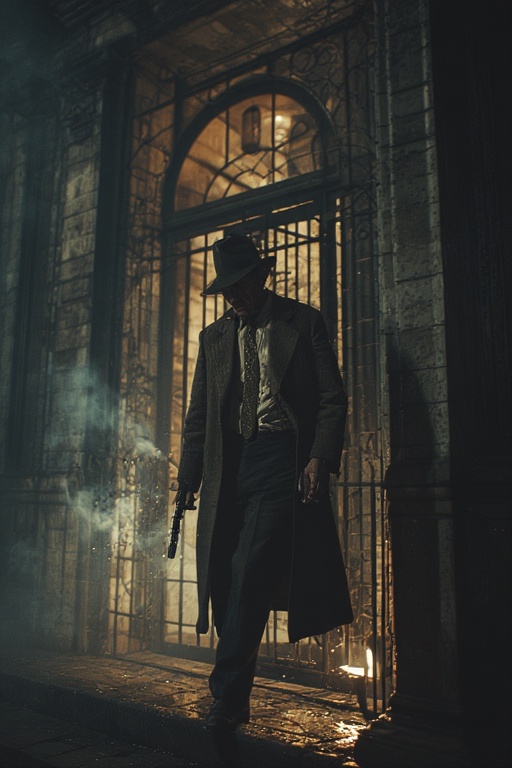
John Dillinger was born on June 22, 1903, in Indianapolis, Indiana, to John Wilson Dillinger Sr. and Elizabeth “Lizzie” Wilson. His early life was marked by tragedy when his mother died in childbirth when he was just four years old. His father remarried, but John’s relationship with his stepmother was strained. He grew up in a grocer’s store where his father worked and was known to be a bit of a troublemaker as a child.
Dillinger’s life of crime began early. At 21, he was arrested for theft and sentenced to 10-20 years in prison. During his time at the Indiana State Prison in Michigan City, he befriended several other notorious criminals, including Homer Van Meter and Harry Pierpont. These relationships would later shape his criminal career.
After serving nine years, Dillinger was paroled in 1933. However, he soon returned to crime, committing a series of bank robberies across the Midwest. His exploits earned him the nickname “Public Enemy No. 1” from the FBI. Dillinger’s notoriety grew, and he became a folk hero of sorts, with many people sympathizing with his actions against banks, which were seen as symbols of the economic hardship of the Great Depression.
One of the most significant figures in Dillinger’s life during this period was Polly Hamilton, a young woman he met while still in prison. She became his girlfriend and visited him regularly during his incarceration. Their relationship continued after his release, and Polly often accompanied Dillinger on his robberies.
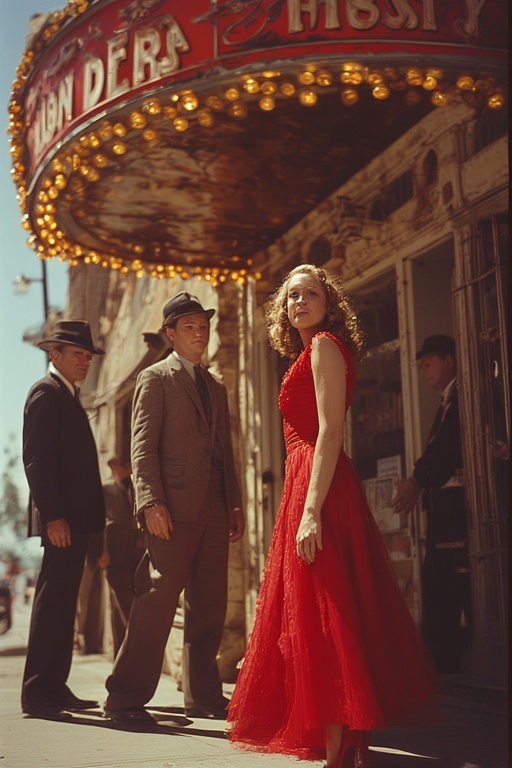
Another crucial figure in Dillinger’s life was Anna Sage, also known as “Woman in Red.” Sage, a Romanian-American woman, had her own criminal record and became involved with Dillinger. She played a pivotal role in his eventual demise. Sage, who had been in trouble with the law and was facing deportation, agreed to cooperate with the FBI in exchange for leniency on her own charges. She lured Dillinger to the Biograph Theater in Chicago, where he was watching a movie, promising him a night out.
On July 22, 1934, outside the Biograph Theater, FBI agents ambushed Dillinger as he left the movie. Sage, wearing a red dress that would become infamous, was with him. The FBI agents, led by Melvin Purvis, had been informed of Dillinger’s presence by Sage. As Dillinger attempted to draw his gun, he was shot multiple times. He died shortly after, at the age of 31.
Dillinger’s life of crime and his eventual death captivated the nation. His exploits were widely covered in the media, and his legend grew as a result. Despite his notoriety, Dillinger’s actions were often romanticized, and he became a symbol of rebellion against the system.
Interestingly, Dillinger’s criminal career was marked by several close calls and narrow escapes. He was known for his brazen robberies and his ability to evade capture. However, his relationship with Anna Sage ultimately proved to be his downfall.
The Biograph Theater, where Dillinger met his end, still stands in Chicago and has become a piece of American history. Visitors can see the theater and learn more about the events that transpired there. Dillinger’s legacy continues to fascinate people, and his story remains one of the most infamous in American crime history.
In the years following Dillinger’s death, the FBI’s reputation grew significantly, and Melvin Purvis became a national hero. However, the role of Anna Sage in Dillinger’s death has been the subject of much debate. While some view her as a traitor, others see her as a pragmatic woman who made difficult choices to save herself.
Dillinger’s impact on popular culture is undeniable. He has been the subject of numerous films, books, and documentaries. The 1945 film “Dillinger” and the 1973 film “Dillinger” starring Warren Oates are just a couple of examples. More recently, the 2009 film “Public Enemies” directed by Michael Mann and starring Johnny Depp as Dillinger, brought his story to a new generation.
John Dillinger’s life was a complex mix of tragedy, crime, and notoriety. From his early days in Indianapolis to his eventual death in Chicago, his story is a fascinating and cautionary tale of the allure and consequences of a life of crime. Despite the passage of time, Dillinger’s legend endures, captivating audiences and reminding us of the darker side of the American Dream.
Dillinger’s robberies often involved careful planning and execution. He and his gang would meticulously plan each heist, using stolen cars and guns to carry out their crimes. Dillinger’s brazen nature and charm made him a compelling figure, both to the public and to those who knew him personally.
The FBI’s pursuit of Dillinger was relentless. Led by agents like Melvin Purvis…
Home: https://www.wendellsweet.com
Great question! While the brand name Chevrolet itself has French roots—it’s the surname of Louis Chevrolet, a Swiss-born race car driver with French linguistic heritage—the actual vehicle names from Chevrolet aren’t typically derived from French words.
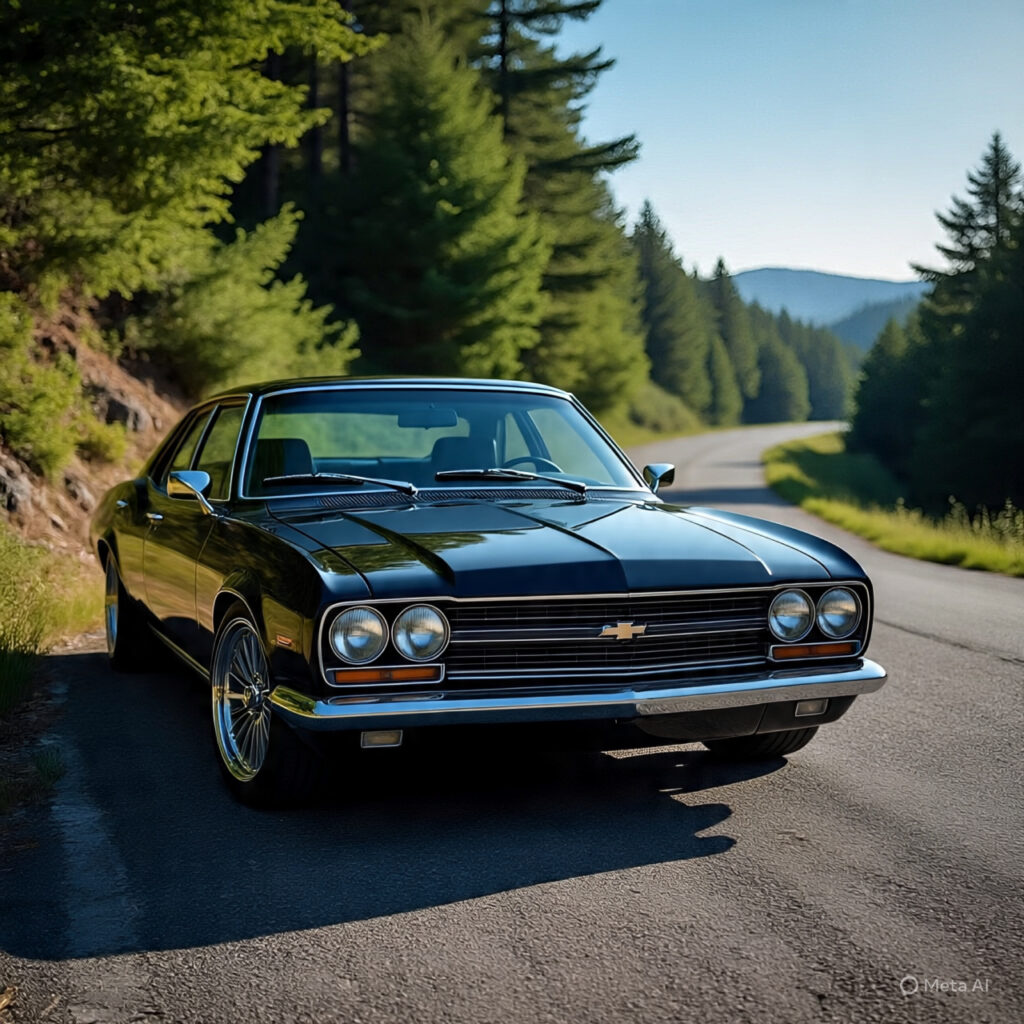
Here’s a breakdown:
🏁 The Name “Chevrolet”
- Origin: Named after Louis Chevrolet, co-founder of the company in 1911.
- Linguistic roots: The surname “Chevrolet” sounds French and includes the diminutive suffix “-et,” common in French names like ballet or omelet2.
- Meaning: Despite the French sound, it’s a surname—not a word with a specific meaning in French.
🚗 Vehicle Names with French Influence?
Most Chevrolet vehicle names are not French. They tend to be:
- English descriptors (e.g., Cruze, Trailblazer, Silverado)
- Spanish or Latin-inspired (e.g., Camaro—possibly from a French slang term meaning “friend,” though this is debated)
- Invented or stylized names (e.g., Equinox, Tahoe, Blazer)
🤔 What About “Camaro”?
This one’s interesting:
- Chevrolet claimed Camaro meant “friend” in French slang when it launched in the 1960s.
- However, no such word exists in standard French. It’s likely a marketing invention with a French flavor to evoke camaraderie and style.
So while the brand carries a French-sounding name, the vehicles themselves are mostly named with American flair or global appeal, not directly from French vocabulary.
🏁 Formation of Chevrolet Motor Company
- Founded: November 1911
- Founders: Louis Chevrolet, a Swiss-born race car driver, and William C. Durant, a visionary businessman who had previously founded GM in 1908.
- Purpose: After Durant was ousted from GM in 1910 due to overexpansion and financial troubles, he launched Chevrolet to compete with Ford’s Model T and regain influence in the auto industry.
- Early Success: Chevrolet quickly gained traction, turning a profit and building a reputation for stylish, reliable cars.
🔄 Acquisition by General Motors
- Date of Acquisition: May 2, 1918
- How It Happened: Durant used Chevrolet’s success to buy up GM stock. In a strategic move, he offered GM shareholders five shares of Chevrolet for every one share of GM. The offer was irresistible, and it allowed Durant to reclaim control of GM.
- Irony: Durant had been forced out of GM in 1910, only to return by merging it with the company he built after his exile.
- Aftermath: Durant became GM’s president again—but only briefly. In 1920, financial troubles returned, and Pierre S. DuPont took control, permanently removing Durant from GM.
🚘 Legacy
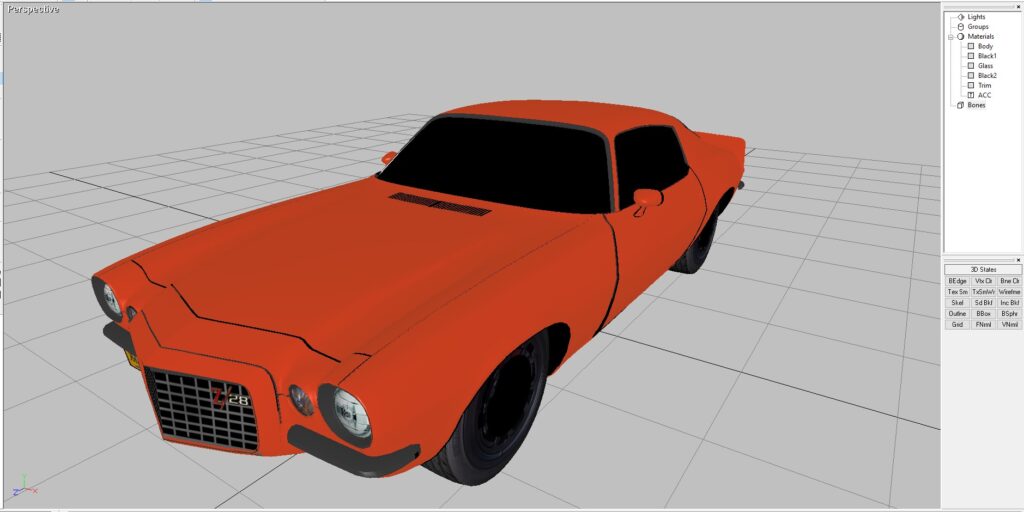
- Chevrolet became a cornerstone of GM’s brand portfolio, known for iconic models like the Corvette, Camaro, and Silverado.
- The merger helped GM dominate the American auto industry for decades, with Chevrolet playing a key role in its rise.
It’s a classic tale of comeback and corporate chess. Want to explore how Chevrolet’s early models stacked up against Ford’s at the time?


Ford Model T (1908–1927)
Price: Dropped to under $300 by the mid-1920s thanks to Ford’s revolutionary assembly line.
Engine: 2.9L inline-4, ~20 horsepower.
Strengths:
Mass production = affordability.
Durable and simple to maintain.
Became the symbol of American mobility.
Weaknesses:
Spartan features.
Manual crank start (early models).
Limited styling and comfort.
🚘 Chevrolet Series 490 (1915–1922)
Price: Introduced at $490, hence the name.
Engine: 171 cu in inline-4, ~24 horsepower.
Strengths:
More advanced tech: overhead valve engine, electric starter, better instrumentation.
Smoother ride and more refined interior.
Positioned as “more car for the same money.”
Weaknesses:
Slightly higher price.
Less brand recognition early on.
⚔️ Head-to-Head Highlights
Feature Ford Model T Chevy Series 490
Price ~$300 (1920s) $490 (intro price)
Horsepower ~20 HP ~24 HP
Starter Manual (early) Electric (later models)
Transmission 2-speed planetary 3-speed manual
Market Position Mass-market leader Challenger with upgrades
🏁 Outcome
Ford dominated early on, selling millions of Model Ts.
Chevrolet slowly gained ground with better features and comfort.
By 1927, Ford shut down Model T production to retool for the Model A, and Chevrolet surpassed Ford in sales for the first time.
🚗 Ford Model A (1928–1931)
- Engine: 3.3L inline-4, producing 40 horsepower
- Transmission: 3-speed manual
- Price: Around $495 for a Tudor Sedan
- Strengths:
- Stylish design by Edsel Ford
- Reliable and easy to maintain
- Came in multiple colors (unlike the Model T’s “any color as long as it’s black”)
- Weaknesses:
- Still a 4-cylinder, while competitors were moving to six
- Basic interior and limited features
🛠️ Chevrolet Stovebolt Six (1929)
- Engine: 3.2L inline-6, producing 46 horsepower initially, later boosted to 50+ HP
- Design: Overhead valve (OHV), nicknamed “Cast-Iron Wonder”
- Marketing tagline: “A Six for the Price of a Four”
- Strengths:
- Smoother performance and more power than Ford’s 4-cylinder
- Advanced engineering with OHV design
- Only about $100 more than the Model A
- Impact:
- Helped Chevrolet regain the sales lead from Ford in 1931
- Became the foundation of Chevy’s engineering reputation for decades
⚔️ Head-to-Head Snapshot
| Feature | Ford Model A | Chevy Stovebolt Six |
| Engine | 4-cylinder, 40 HP | 6-cylinder, 46–50 HP |
| Price | ~$495 | ~$595 |
| Design | Flathead | Overhead Valve (OHV) |
| Ride Quality | Basic | Smoother, more refined |
| Market Impact | Stylish upgrade from Model T | Game-changer in power and value |
This was a turning point: Ford had style, but Chevrolet brought power and innovation. The Stovebolt Six wasn’t just a better engine—it was a strategic move that helped Chevrolet dominate the market for years.
🔧 Ford’s Flathead V8 (1932)
Introduced: 1932, in the Ford Model 18
Innovation: First mass-produced, affordable V8 engine
Specs: 3.6L V8, ~65 horsepower
Impact:
Made high performance accessible to everyday drivers
Revolutionized the auto industry by offering power at a low price
Became a favorite among hot rodders—and criminals
Ford’s move was a direct response to Chevrolet’s six-cylinder success in 1929. Henry Ford, who disliked inline-sixes, pushed for a bold leap: a single-piece cast V8 block, which was unheard of at the time.

🕵️ Clyde Barrow’s Letter to Henry Ford (1934)
Date: April 10, 1934
Location: Tulsa, Oklahoma
Content: Clyde praised the Ford V8 as the ultimate getaway car. He wrote:
Context:
Clyde and Bonnie Parker were infamous for their string of robberies and murders across the Midwest.
They routinely stole Ford V8s for their speed and reliability.
The letter was unsolicited and handwritten—an odd kind of product endorsement from a fugitive.
Legacy:
The letter is preserved at The Henry Ford Museum.
Though some handwriting experts question its authenticity, it’s widely accepted as genuine or at least consistent with Barrow’s style.
It added to the mythos of the Ford V8 as both a symbol of American ingenuity and outlaw infamy.
So yes—Ford’s engineering brilliance inadvertently became a tool for one of the most notorious crime sprees in U.S. history.
the Bonnie and Clyde “Death Car”, why it mattered, and how it became a macabre legend.
🚘 The Car: 1934 Ford Model 730 Deluxe Sedan
Color: Tan
Engine: Ford’s powerful Flathead V8
Why They Chose It:
It was faster than most police cars at the time.
The V8 engine gave them the edge in high-speed getaways.
It was stolen from a Kansas couple just weeks before their deaths.
🔫 The Ambush: May 23, 1934
Location: Bienville Parish, Louisiana
Event: A posse of six lawmen ambushed the car on a rural road.
Firepower: They unleashed 167 bullets, riddling the car with over 120 bullet holes3.
Outcome:
Clyde was killed instantly by a headshot.
Bonnie was hit multiple times—reportedly 26 wounds.
The car veered into a ditch and nearly overturned.
🧠 Why It’s Significant
Symbol of Rebellion: The car became a symbol of speed, defiance, and the outlaw mystique.
Cultural Impact:
Crowds swarmed the scene to see the bullet-riddled car.
Some people even tried to take shards of glass as souvenirs.
Touring Sideshow:
The car was returned to its original owner, Ruth Warren, who leased it out to tour the country.
It appeared at state fairs, amusement parks, and even racetracks where people paid to sit inside.
Current Location: Today, it’s on display at Whiskey Pete’s Casino in Primm, Nevada.
🕵️ The Legacy
This Ford V8 wasn’t just a getaway car—it became a gruesome celebrity. It represents the collision of innovation, crime, and media spectacle. And it’s a reminder of how even a stolen car can become a permanent part of American folklore.
Related: The story of Bonnie and Clyde
Home: https://www.wendellsweet.com
